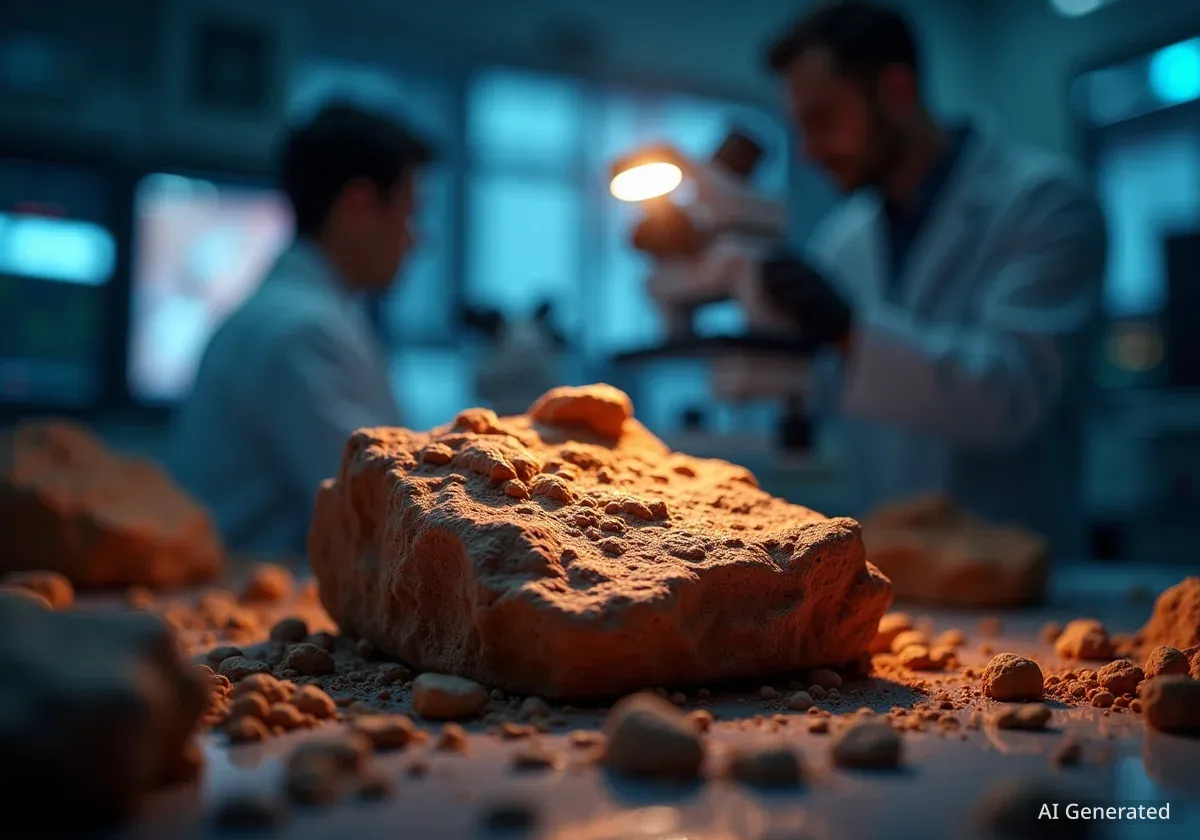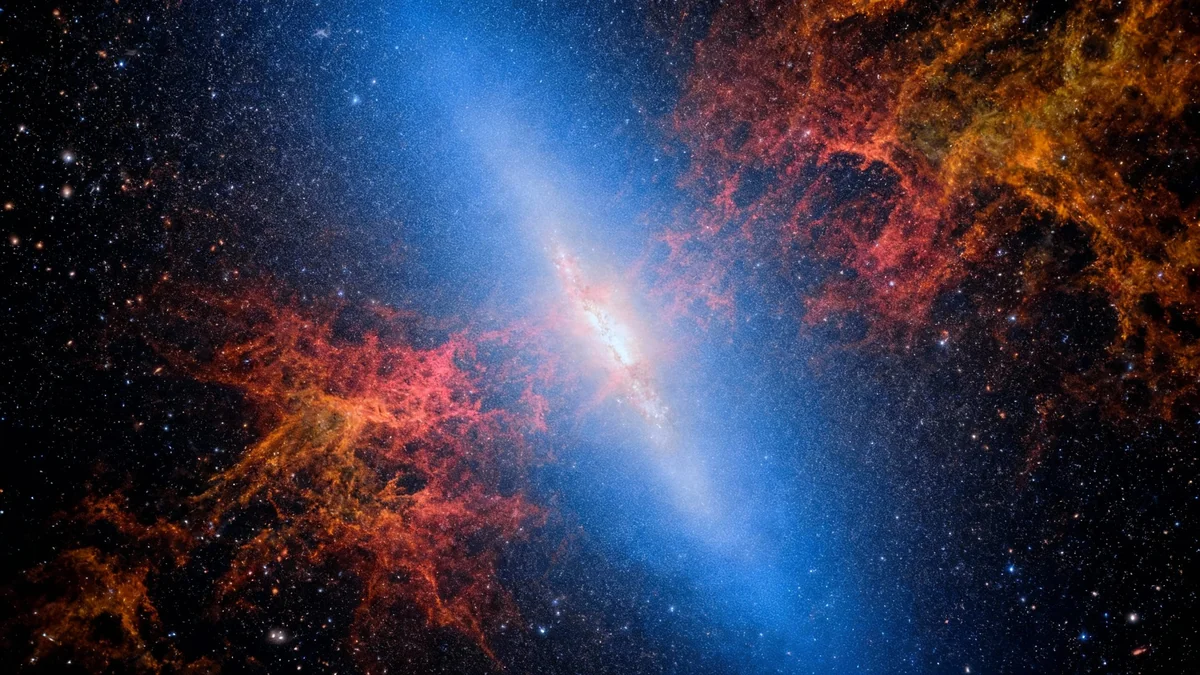A University of Iowa planetary geologist is playing a key role in analyzing a unique rock discovered by NASA's Perseverance rover on Mars. The rock, found in an ancient crater, displays features that on Earth are often associated with microbial life, marking a potentially significant step in the search for extraterrestrial existence.
The geologist, Valerie Payre, is part of the international team of scientists examining data sent back from the Red Planet. The discovery could help answer one of humanity's most profound questions: are we alone in the universe?
Key Takeaways
- NASA's Perseverance rover discovered a rock with unusual features in Mars' Jezero Crater in July 2024.
- The rock, named "Cheyava Falls," has patterns similar to those created by microorganisms on Earth.
- University of Iowa geologist Valerie Payre is a co-investigator on the rover's SuperCam instrument, helping to analyze the findings.
- This discovery is considered a potential breakthrough in the ongoing search for evidence of past life on Mars.
A Promising Discovery in Jezero Crater
NASA's Perseverance rover, which landed on Mars in 2020, made a significant find in July 2024 while exploring a region known as the "Bright Angel" outcrops. There, it encountered a reddish rock with distinctive leopard-like spots, a formation unlike anything previously seen on the planet.
The rock was officially nicknamed "Cheyava Falls." According to scientists, the first images immediately captured the team's attention because of their resemblance to terrestrial biosignatures.
"Scientists could see some features on the rock that were never seen and never observed before," said Valerie Payre, a planetary geologist at the University of Iowa. "And that was really of interest, because on Earth, when you see these type of features, it's usually related to microbes or microorganisms living on that rock.”
The Significance of Jezero Crater
The location of the discovery is critical. NASA specifically chose the 28-mile-wide Jezero Crater as the landing site for Perseverance because evidence suggests it once held a large lake and a river delta. This ancient aquatic environment makes it one of the most promising places to search for preserved signs of ancient microbial life.
The rover's mission is to explore this crater, collect rock and soil samples for a potential future return to Earth, and search for signs of past habitability. The discovery of "Cheyava Falls" aligns perfectly with these primary objectives.
What is a Biosignature?
A biosignature is any substance, object, or pattern whose origin specifically requires a biological agent. On Earth, these can include complex organic molecules, specific mineral deposits left by bacteria, or fossilized cells. Finding a confirmed biosignature on Mars would be definitive proof of past or present life.
The Role of a University of Iowa Scientist
Valerie Payre is deeply involved in the analysis of this Martian rock. As a member of the science team for the rover's mission, her expertise is crucial in interpreting the data being collected millions of miles away.
Payre is a co-investigator for the SuperCam instrument, a sophisticated tool mounted on the rover's mast. SuperCam can fire a laser to vaporize small portions of rock from a distance, allowing its sensors to analyze the chemical composition of the resulting plasma. This technology provides detailed information about the rock's mineralogy without the rover needing to touch it.
Perseverance Rover's Toolkit
The Perseverance rover is equipped with a suite of advanced scientific instruments, including:
- SuperCam: Analyzes chemical and mineral composition.
- Mastcam-Z: A pair of cameras for panoramic and stereoscopic imaging.
- PIXL: An X-ray spectrometer to map elemental composition.
- SHERLOC: An ultraviolet spectrometer that can detect organic compounds.
The initial analysis of "Cheyava Falls" began with photographs. Once the unusual features were identified, the science team, including Payre, directed the rover to conduct a more detailed investigation using instruments like SuperCam to understand what the rock is made of.
What This Discovery Could Mean
While the visual patterns on "Cheyava Falls" are intriguing, scientists are exercising caution. Geologic processes that do not involve life can sometimes create structures that mimic biological ones. The team's primary task now is to rule out all non-biological explanations for the rock's features.
However, the possibility that these patterns were formed by ancient Martian life remains a central focus of the investigation. If confirmed, the implications would be transformative for science and our understanding of the cosmos.
"If scientists can prove evidence of life on Mars — now or at any point in the past — that would be a first," Payre explained. "That would mean we might not be alone in the solar system or even the universe."
This discovery represents a critical moment in the mission. The data gathered from "Cheyava Falls" will be among the most scrutinized information ever returned from another planet. It brings researchers one step closer to what Payre calls a "galactic breakthrough," potentially changing our place in the universe forever.
The ongoing analysis by Payre and her colleagues at NASA will determine whether this interesting rock is simply a geological curiosity or a genuine signpost pointing to a time when Mars, like Earth, hosted life.





